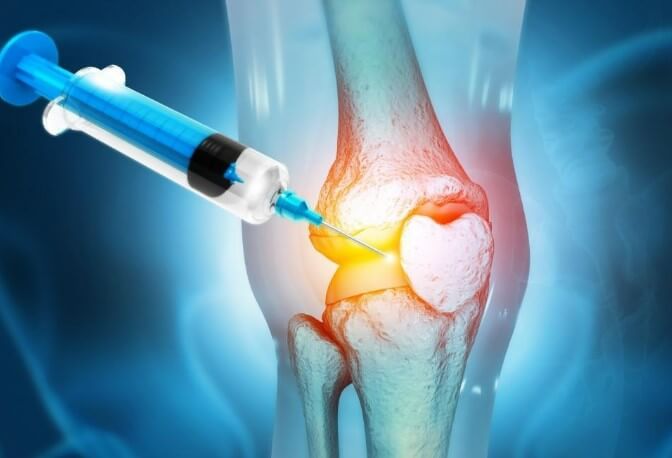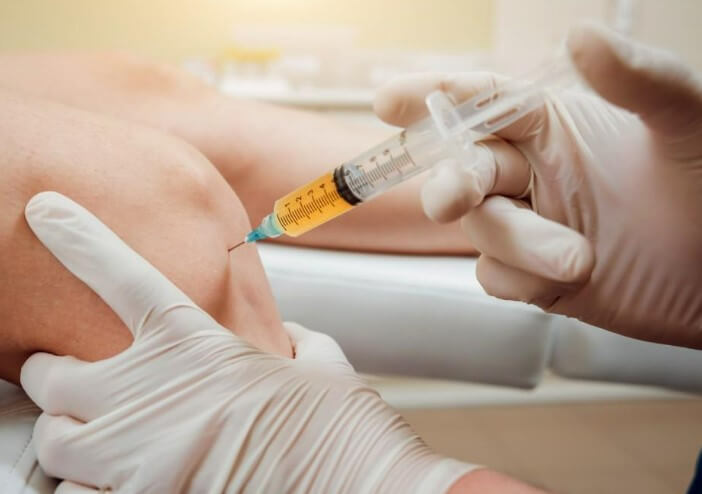
PRP for Knee Pain: What You Need to Know
Knee pain is a common issue that affects millions of people worldwide, whether due to aging, injury, or chronic conditions like osteoarthritis. When conservative treatments like physical therapy and medications don’t provide relief, individuals may seek out more advanced options. One such promising treatment is Platelet-Rich Plasma (PRP) therapy, a cutting-edge approach that has been gaining attention for its potential to alleviate knee pain and improve joint function.
In this blog post, we’ll dive into what PRP therapy is, how it works for knee pain, the benefits it offers, and what you need to know before considering it as a treatment option. If you’re experiencing knee pain and are looking for alternatives to surgery, PRP for knee pain may be the solution you’ve been searching for.
What is PRP Therapy?
PRP therapy is a non-surgical treatment that involves the use of your body’s own platelets to promote healing in damaged tissues. Platelets are tiny cells in the blood that play a crucial role in healing by triggering the body’s natural repair processes. PRP therapy involves extracting a small sample of your blood, processing it to concentrate the platelets, and then injecting this concentrated solution into the affected area, such as the knee.
The process is minimally invasive and can be done in an outpatient setting, making it a convenient alternative to traditional surgical options. The idea behind PRP therapy is to harness the body’s healing properties to repair damaged tissues in the knee, reducing pain and promoting faster recovery.
How Does PRP for Knee Pain Work?
When PRP is injected into the knee joint, the concentrated platelets work to stimulate tissue repair and regeneration. The platelets release growth factors that help:
- Promote the growth of new blood vessels (angiogenesis)
- Increase collagen production to support tissue healing
- Encourage cell proliferation, which accelerates the healing process
- Reduce inflammation, which is a key factor in pain
For people suffering from knee pain, PRP can help regenerate damaged tissues, including cartilage, tendons, and ligaments. Whether the pain is a result of arthritis, an injury, or tendonitis, PRP therapy works by enhancing the body’s natural healing processes to reduce pain and improve function.

SCHEDULE A CONSULTATION
Experience a pain-free life! Call us at (727) 268-0172
Benefits of PRP for Knee Pain
PRP for knee pain offers several advantages over traditional treatment options, especially for individuals who want to avoid invasive surgeries or long-term medication use. Here are some key benefits:
1. Non-Surgical Treatment
PRP therapy is a minimally invasive procedure, meaning there are no large incisions or long recovery times. Patients can typically return to normal activities relatively quickly, with minimal downtime compared to surgery. For many people, this makes PRP an appealing option when they want to avoid the risks and recovery associated with knee surgery.
2. Faster Recovery and Healing
Because PRP uses the body’s own healing mechanisms, the healing process can be significantly faster than with other treatments. Growth factors from the platelets stimulate the body’s repair processes, helping to speed up the recovery of damaged tissues in the knee joint.
3. Reduced Pain and Inflammation
PRP injections help reduce inflammation in the knee joint, which is often a key contributor to pain. By addressing inflammation directly, PRP therapy provides effective pain relief, which can last for several months or longer, depending on the individual.
4. Improved Joint Function
In addition to pain relief, PRP therapy can improve the overall function of the knee joint. By regenerating damaged tissues and reducing inflammation, patients often experience increased mobility, strength, and flexibility in the knee, making it easier to perform everyday activities.
5. Minimal Risk and Side Effects
Since PRP uses the patient’s own blood, the risk of adverse reactions or complications is minimal. While some patients may experience mild soreness or swelling at the injection site, these side effects typically subside within a few days. This makes PRP a relatively low-risk treatment compared to more invasive procedures.
Conditions That PRP Can Help With
PRP for knee pain is commonly used to treat a variety of knee conditions, including:
1. Osteoarthritis
Osteoarthritis is a degenerative joint disease that causes the cartilage in the knee to break down, leading to pain, stiffness, and swelling. PRP therapy has shown promise in reducing the symptoms of osteoarthritis by promoting cartilage repair and reducing inflammation in the knee joint.
2. Tendonitis
Tendonitis, or the inflammation of tendons, is another common cause of knee pain. It can result from overuse or injury and can be particularly painful for athletes or active individuals. PRP injections can help stimulate the healing of the damaged tendons and promote tissue regeneration.
3. Ligament Injuries
Injuries to the ligaments, such as a torn ACL, can lead to long-term knee pain and instability. PRP therapy has been found to support the healing of ligaments by enhancing collagen production and stimulating tissue repair.
4. Cartilage Damage
Knee cartilage plays a crucial role in joint function, acting as a cushion between the bones. If the cartilage is damaged due to injury or arthritis, it can lead to significant pain and difficulty moving the knee. PRP can help regenerate cartilage, potentially reducing pain and improving function.

SCHEDULE A CONSULTATION
Experience a pain-free life! Call us at (727) 268-0172
Is PRP Therapy Right for You?
Before considering PRP therapy for knee pain, it’s important to discuss your options with a healthcare professional. While PRP therapy can offer relief for many patients, it’s not suitable for everyone. Factors such as the severity of the knee condition, your overall health, and the specific type of knee pain you are experiencing will determine whether PRP therapy is a good option for you.
Generally, PRP therapy is best suited for patients who have chronic knee pain that has not responded well to conservative treatments such as medications or physical therapy. It’s also a great alternative for individuals who want to avoid knee surgery or joint replacement.
Your doctor will perform a thorough evaluation, which may include imaging tests like X-rays or MRIs, to determine if PRP therapy is the right treatment for your knee pain. In some cases, your doctor may recommend combining PRP therapy with other treatments to achieve the best results.
What to Expect During PRP Treatment
The process of getting PRP for knee pain is relatively simple and typically involves the following steps:
- Blood Draw: A small amount of blood (around 30-60 mL) is drawn from your arm.
- Processing: The blood is placed in a centrifuge to separate the platelets from other blood components. The result is a concentrated solution of platelets.
- Injection: The concentrated PRP solution is then injected directly into the knee joint, targeting the areas of damage or inflammation.
The procedure usually takes around 30 minutes, and the injection itself is relatively quick and minimally painful. You may experience some discomfort or swelling in the knee following the injection, but this should subside within a few days.
Aftercare and Recovery
PRP therapy is minimally invasive, and most patients can return to their normal activities shortly after the procedure. However, it’s important to follow your healthcare provider’s recommendations for post-treatment care to optimize healing and recovery. This may include:
- Resting the knee for the first 24-48 hours after treatment
- Applying ice to reduce swelling
- Avoiding strenuous activities for a few days
- Gradually increasing activity levels as healing progresses
It may take a few weeks to notice significant improvements in knee pain and function, as the body’s healing process unfolds. Many patients experience the full benefits of PRP therapy within 3-6 months, with relief lasting anywhere from several months to a year or more, depending on the individual and the severity of the knee condition.
Conclusion
PRP therapy offers an exciting, non-surgical solution for individuals suffering from knee pain, especially those who want to avoid invasive procedures. By utilizing the body’s natural healing processes, PRP for knee pain can promote tissue repair, reduce inflammation, and improve joint function, providing significant relief for many patients. If you’re dealing with knee pain and are looking for alternatives to surgery, PRP may be the answer.
Contact Us Today!
At Florida Medical Pain Management, we specialize in PRP therapy and other advanced treatments to help patients recover from knee pain and other musculoskeletal conditions. If you’re interested in learning more about PRP for knee pain, contact us today to schedule a consultation and find out if this cutting-edge treatment is right for you.
Our Treatment Services
Florida Medical Pain Management’s top priority is serving our patients’ needs and creating long-lasting relationships with them. Our treatments include:
- Treatment for Neuropathy
- Arthritis Management
- Back Pain Medication
- Chronic Pain Treatments
- Epidural Injection
- Regenerative Medicine
- Hip Pain Medication
- Ketamine Infusion Therapy
We want to help patients live more fulfilling and productive lives by effectively managing their pain. Florida Medical Pain Management also provides home therapy and many more. Click here to see our other services.















